Are you moving into a new home and trying to figure out what type of countertop you have? Or maybe you’re looking to upgrade your current countertops but not sure what material they are made of. Understanding what your countertop is made of can be essential for proper maintenance, cleaning, and potential repairs.
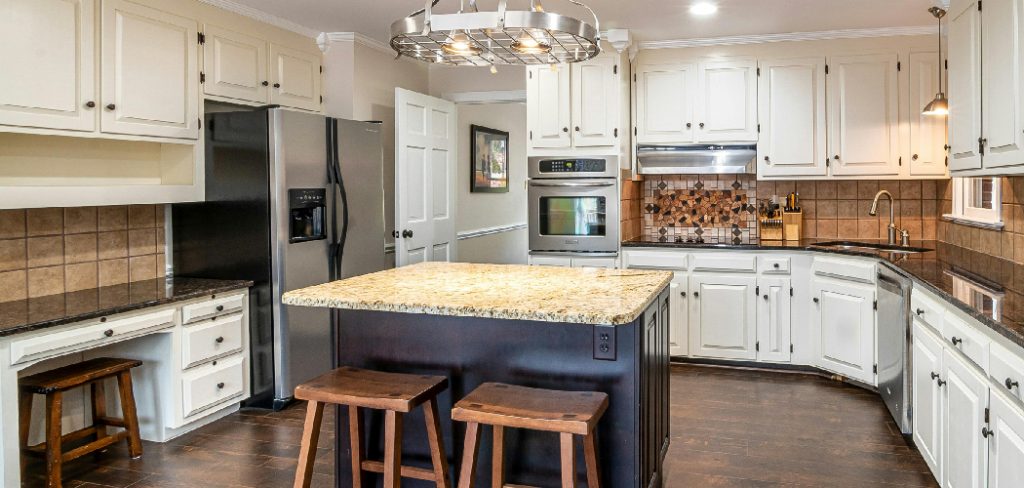
Different materials require different levels of care, and identifying the type of countertop you have ensures you can keep it in the best condition possible. From natural stones like granite and marble to engineered surfaces like quartz and laminate, each material has distinct characteristics that make it unique.
This guide on how to tell what my countertop is made of will help you identify the material of your countertop based on its appearance, texture, and other tell-tale signs.
What Are the Benefits of Knowing Your Countertop Material?
Before we dive into how to identify your countertop material, let’s first understand why it is essential to know.
- Proper Cleaning and Maintenance: Each countertop material has its own set of cleaning and maintenance requirements. For example, natural stone countertops like granite require sealing every few years, while harsh chemicals can easily damage laminate countertops. By knowing what type of material you have, you can ensure that you are using the correct cleaning products and methods for long-lasting durability.
- Identifying Potential Damage: If your countertop sustains any damage or scratches, knowing the material will help determine if it can be repaired or needs to be replaced entirely. For example, engineered surfaces like quartz can be repaired with epoxy resin, while natural stone countertops may require professional polishing or sealing.
- Matching Aesthetics: If you are looking to upgrade your current countertop or replace a damaged section, knowing the material will ensure that you can find a suitable match in terms of color and pattern. This is especially important for natural stones like granite and marble, which have unique veining and patterns.
- Budgeting for Repairs or Upgrades: Different countertop materials come with varying costs for repairs and replacements. Knowing what your countertop is made of can help you budget accordingly when planning for any upgrades or repairs.
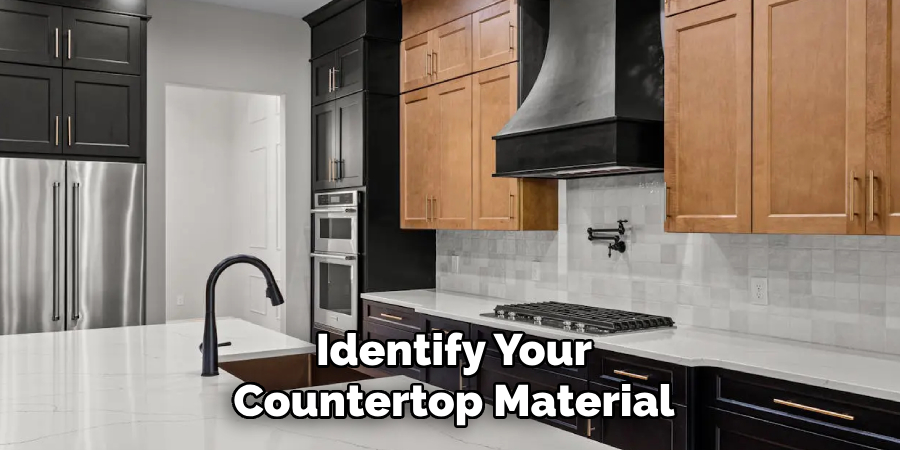
These are just a few reasons why understanding your countertop material is crucial for its maintenance and overall appearance.
What Will You Need?
Before we begin, let’s gather some essential tools that will help in identifying the material of your countertop:
- A Magnifying Glass: This will come in handy for inspecting the surface of your countertop and looking for any distinguishing features.
- A Light Source: Natural light or a flashlight can help showcase unique patterns, colors, and textures on your countertop’s surface.
- Chemical Solutions: Some materials may require testing with specific chemicals to determine their composition. Ensure you have the necessary solutions, such as vinegar or rubbing alcohol.
Now that we have everything we need, let’s get started!
8 Easy Steps on How to Tell What My Countertop is Made of:
Step 1: Examine the Appearance
Begin by closely observing the surface of the countertop. Use a magnifying glass and light source to identify key characteristics such as color, pattern, and texture. For example, natural stones like granite or marble often have irregular veins or speckles, while engineered surfaces like quartz may have uniform patterns. Take note of any distinguishing features that could hint at the material type.
Step 2: Perform a Scratch Test
Using a small, inconspicuous countertop area, gently conduct a scratch test with a steel knife or another sharp object. Natural stones, such as granite, are more resistant to scratches, while softer materials like laminate or solid surface countertops may show marks more easily. Be cautious and avoid excessive force to prevent damage to your countertop. This test can help narrow down the material based on its hardness and durability.
Step 3: Check for Porosity
Test the porosity of the countertop material by placing a few drops of water or a small amount of oil on its surface. Observe how the liquid behaves over a few minutes. Natural stones like marble and granite are porous and may absorb the liquid, leaving a darkened spot, while materials like quartz or laminate are non-porous and will repel it. This step can provide further clues about the countertop’s composition and maintenance requirements.
Step 4: Inspect the Surface Pattern and Texture
Carefully examine the surface pattern and texture of the countertop under good lighting. Natural materials, such as granite and marble, often showcase unique, irregular patterns and variations in color, which are inherent to their formation process.
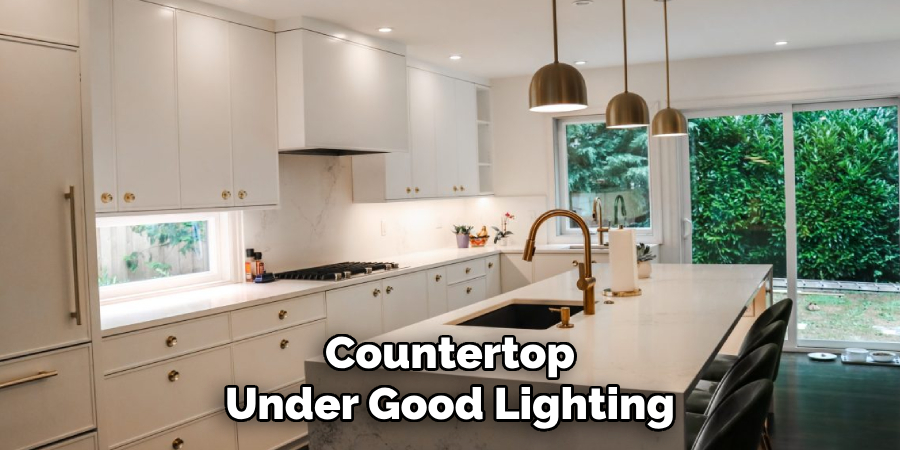
On the other hand, engineered materials like quartz or laminate typically have more uniform and consistent designs. Run your hand across the surface to gauge its texture—rougher textures may indicate natural stone, while smoother, flawless finishes are standard in synthetic materials. This inspection can aid in identifying the material and its aesthetic characteristics.
Step 5: Perform a Durability Test
Test the countertop’s durability by assessing its resistance to scratches and stains. For scratch resistance, gently use a coin or a similar object on a small, inconspicuous surface area. Natural stones like granite are typically more scratch-resistant than synthetic materials like laminate.
To test stain resistance, place a small drop of water, oil, or another liquid on the surface and observe if it gets absorbed or stays on the surface. Non-porous materials like quartz are more likely to resist staining, while porous stones like marble may absorb the liquid, leaving a mark. Always proceed carefully to avoid causing visible damage during this step. This test helps determine how well the countertop will withstand daily use. Don’t forget to clean up any spills immediately after testing!
Step 6: Evaluate Heat Resistance
Assess the countertop’s ability to withstand heat, which is crucial for kitchen surfaces. Carefully place a hot pan or a heated object on a small, inconspicuous area or use a heat-resistant pad to test. Materials like granite and quartz typically have high heat resistance, making them suitable for handling hot cookware.
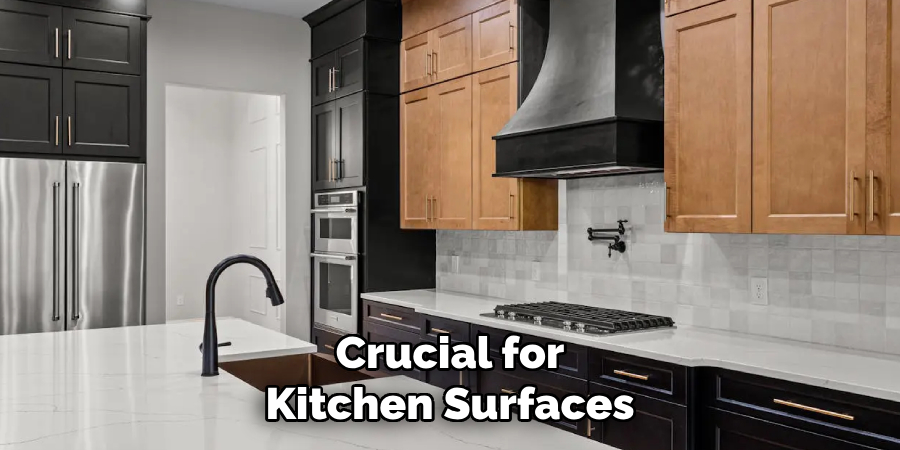
On the other hand, laminate and certain synthetic surfaces may warp, discolor, or sustain damage when exposed to high temperatures. Keep safety in mind and test cautiously to ensure the surface remains unharmed.
Step 7: Inspect Scratch Resistance
Evaluate the countertop’s scratch resistance to determine its durability under everyday use. Use a small, inconspicuous surface area to gently apply pressure with a blunt object, such as a coin or a key. Materials like quartz and natural stones often offer high scratch resistance, making them ideal for heavy kitchen activities. However, softer surfaces like wood or laminate may show scratches more quickly, requiring extra care during use. Conduct this test carefully to avoid permanent damage, and keep the results in mind when choosing the exemplary maintenance practices for your countertop.
Step 8: Assess Stain Resistance
Test the countertop’s resistance to stains by applying small amounts of common substances such as oil, wine, coffee, or vinegar to an inconspicuous area. Allow the substances to sit briefly before wiping them off with a clean cloth. Materials like granite and quartz generally offer excellent stain resistance, while porous surfaces like marble or unsealed concrete can absorb liquids, leading to discoloration.
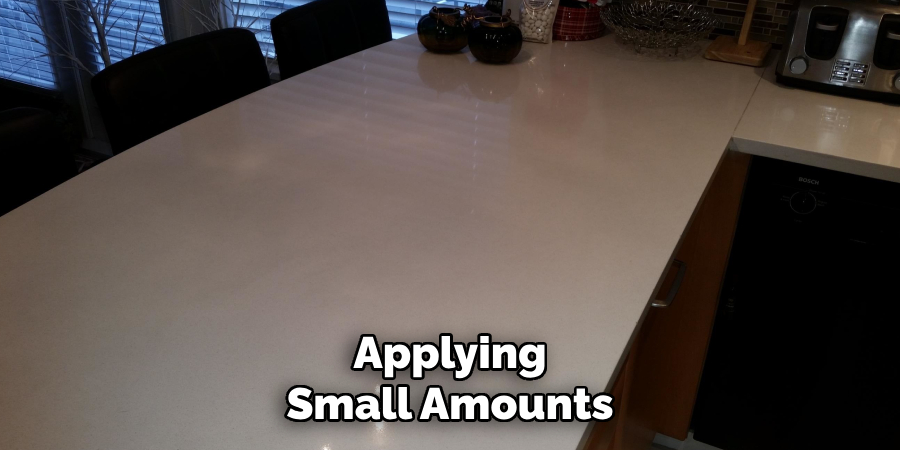
This test will help identify how to protect your countertop and whether additional sealing or maintenance might be required.
By following these eight easy steps, you can confidently determine the composition of your countertop and make informed decisions on its care and maintenance.
5 Things You Should Avoid
- Guessing Based on Appearance Alone: Many countertop materials can look similar. For example, quartz can mimic granite or marble, and laminate can resemble natural stone. Avoid relying solely on visual inspection without further investigation.
- Using Harsh Chemicals for Identification: Some people may attempt to test their countertop’s material with acids or abrasive cleaners. This approach can damage the surface and compromise the durability of your countertop.
- Overlooking Edge Details: The edges of your countertop can provide hints about the material. However, using this as the only method of identity can be misleading. Always combine this with other inspections.
- Disregarding Professional Help: If uncertain, it’s better to consult a professional installer or product expert. Avoid relying on guesswork, as it can lead to an incorrect determination.
- Failing to Research: Each countertop material has specific characteristics, such as texture, weight, or resistance to heat. Skipping thorough research may lead to confusion or incorrect assumptions about what your countertop is made of.
By avoiding these common mistakes, you can accurately identify your countertop material and make informed decisions regarding its care and maintenance.
Conclusion
Identifying what your countertop is made of is crucial for ensuring proper care and maintenance. By paying attention to details such as visual appearance, texture, weight, and heat resistance, you can narrow down the possibilities.
Avoiding common mistakes like relying solely on one method, neglecting professional advice, or failing to research specific material traits will make the process more accurate. Taking a systematic approach and combining different inspection methods will help you confidently determine the composition of your countertop and preserve its longevity.
Hopefully, the article on how to tell what my countertop is made of has provided you with valuable information and insights. So go ahead, put your knowledge to the test, and accurately identify what your countertop is made of!
Professional Focus
Angela Ervin, a former interior designer turned blogger, specializes in kitchen design and renovations. Through her website, she blends her passion for cooking with design expertise, sharing practical and creative ideas. Known for balancing functionality and beauty, Angela’s insightful content has made her a trusted voice in home design and lifestyle.
About the Author
Angela Ervin, an experienced interior designer and blogger, combines her passion for kitchen renovations with storytelling. Living in Petersburg with her family, she enjoys cooking and testing her projects firsthand. Known for her humor and relatable style, Angela shares creative, functional design insights through her content, making her a trusted voice in home design.
Education History
University: Virginia Commonwealth University
Degree: Bachelor of Fine Arts (BFA) in Interior Design
- Angela’s education at VCU focused on mastering core interior design principles, including spatial planning, color theory, materials selection, and sustainable design practices.
- She gained hands-on experience through studio projects and collaborative design exercises, which honed her ability to create functional and aesthetically pleasing environments.
- Her coursework also emphasized problem-solving and practical applications of design, preparing her for real-world projects like her self-directed kitchen renovations.
- The program’s strong foundation in both technical skills and creative expression shaped Angela’s ability to seamlessly integrate form and function in her work.
